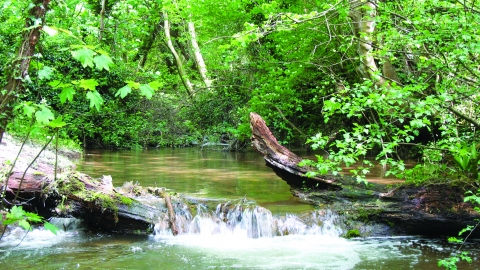
Y Ddol Uchaf Nature Reserve

Chiffchaff - Janet Packham Photography

Nuthatch © Jon Hawkins - Surrey Hills Photography

Lesser Celandine_Ross Hoddinott2020Vision
Ddol Uchaf Nature Reserve
Know before you go
Dogs
When to visit
Opening times
Open at all timesBest time to visit
Summer for meadow flowers and emerging dragonfliesAbout the reserve
This former quarry site today flourishes as a wildlife-rich patchwork of woodland, grassland, ponds and river. The limestone-rich soils create perfect conditions for grassland wildflowers such as kidney vetch, cowslips, St John’s-wort and common spotted-orchid. The dappled sunlight matches the whites and yellows of the springtime flowers that cover the woodland floor, accompanied by the calming soundtrack of running water and birdsong. Whilst the lush green woodland canopy is made up of sycamore, ash and willow, the lower storey is made up of hawthorn, elder and hazel. The unusual geological characteristics of the site (its residual marl clay, left following the quarrying of tufa) help capture rainwater, forming ponds favoured by all three native species of newt – smooth, palmate and great crested – as well as grass snakes and many dragonflies.
Thinning, planting and ponds
The key with managing all habitats at Ddôl Uchaf is to maintain variety – ensuring everything remains in balance. The woodland is selectively thinned to manage the age structure and make sure that there are areas of open canopy, allowing natural regeneration to take place. Every autumn, the grassland is cut by hand using scythes in order to maintain its rich species diversity. Portions of the ponds are cleared and silt removed every year to make sure that the water remains open.
Directions
The reserve is located approx. 1 km east of Afonwen, Flintshire, on the A541 between Mold and Denbigh. Heading East, turn Left off the A541 at Y Ddôl Chapel and follow the lane for 400m. Turn Left at the junction – the entrance and car park are on the Left opposite The Mill (SJ 142 713).





